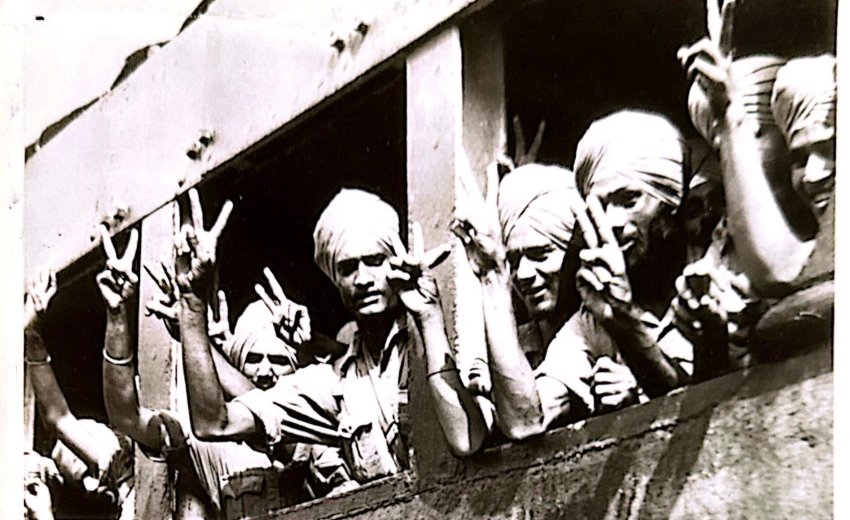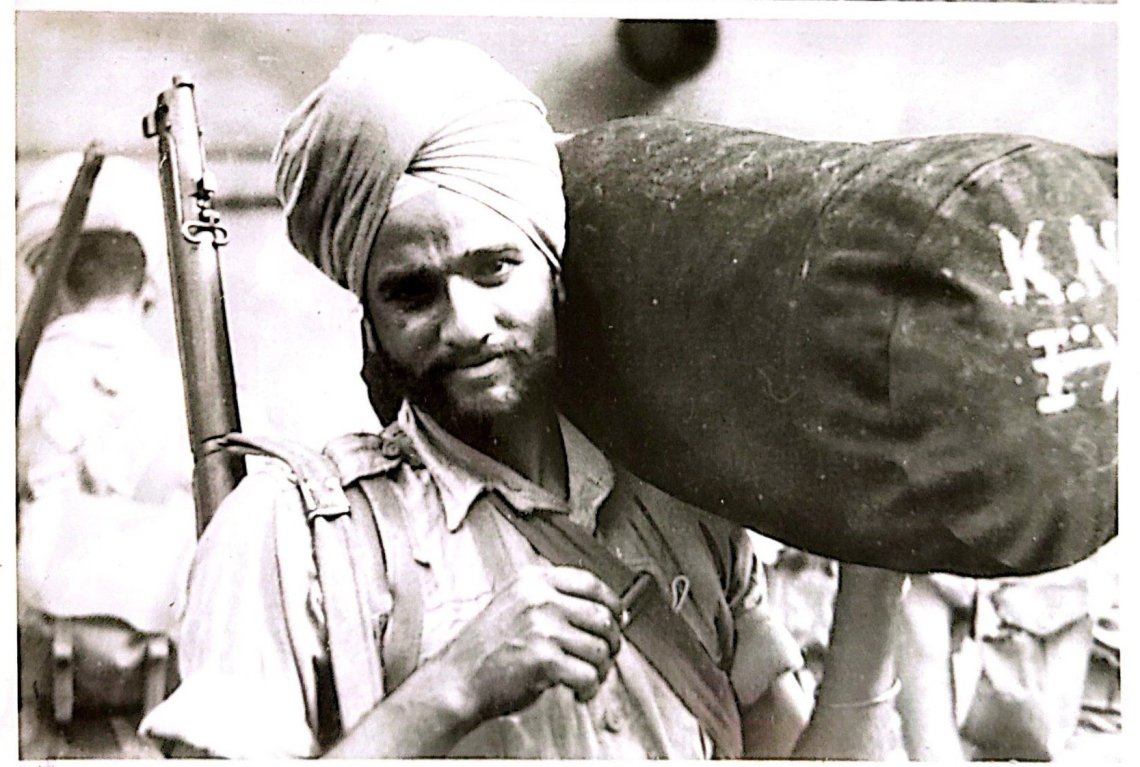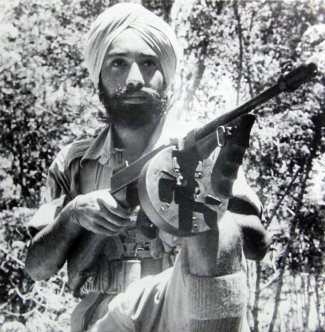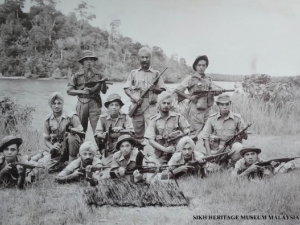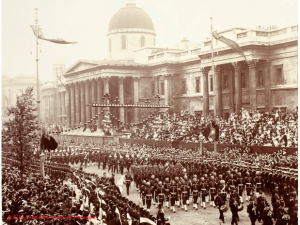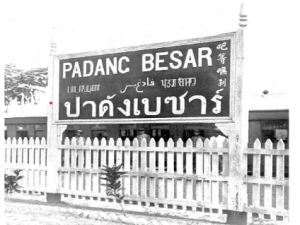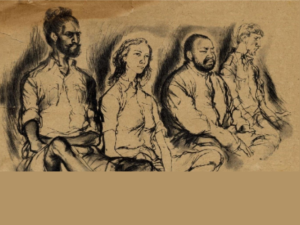British Indian Troops in Malaya
Troops from India, arriving in British Malaya, give the V-for-Victory Signal.
The narrative of Sepoy Basta Singh of the 5th Battalion, 11th Sikh Regiment serves as a remarkable testament to unwavering bravery and dedication to duty. During the intense Battle of Kuantan, despite sustaining a severe knee injury at the onset of the assault, he remained exposed to enemy fire. Unperturbed, he identified two Japanese snipers situated in a tree approximately 200 yards away and advanced toward a light machine gun, successfully neutralising the threat with impressive accuracy. Subsequently, as two fellow sepoys endeavoured to assist him and were wounded in the process, he resolutely implored his platoon commander to send no additional men for his assistance, even stating a preference for death over allowing the battalion to advance without him.
This regiment has been awarded a distinguished honour, consistently demonstrating valour throughout the campaign’s early stages. Sikh officers and soldiers of the 5th Sikh Regiment exhibited extraordinary courage and determination during the Malayan Campaign, maintaining a formidable standard of performance against overwhelming odds.
Amidst the treachery and sabotage from certain local inhabitants, Japanese forces launched fierce attacks during their initial offensives. Several valiant Indian regiments, including Sikhs, Gharwalis, and Punjabis, all under the command of British officers, found themselves isolated from the main body of troops. The subsequent withdrawal into Johore marked the effective loss of North Malaya, including the territories of Selangor, Negeri Sembilan, and Malacca, along with the capital city, Kuala Lumpur.
Troops from India are arriving in Malaya.
One of the soldiers carries equipment ashore. December 17, 1941.
On January 24, 1942, as Japanese forces advanced towards Kluang, which was defended by the 22 Indian Brigade Group with the 8 Brigade Group in reserve, a decisive action was ordered. The 5th Sikhs executed a manoeuvre around the left flank and, following a night of bivouacking, launched a valiant assault that successfully routed the enemy at the bayonet's point, inflicting substantial casualties upon the Japanese forces. This engagement is regarded as one of the most successful encounters of the conflict and has been prominently documented in various official histories of the war.
The necessity for a retreat to Singapore became increasingly evident. Despite incurring significant losses at Gemas and Muar, the Japanese forces maintained their flanking routes, enabling continued advances. The 5th Sikhs took on the role of the advance guard and commenced their march, enduring days without sustenance, yet retaining a steadfast resolve to fight for every inch of territory.
A Sikh soldier is poised to bayonet a Japanese soldier whilst two other Sikhs pursue a fleeing Japanese infantryman during the Battle for Malaya. The Japanese invaded on 8 December 1941, and despite brave resistance from Indian, British and Australian troops, they quickly forced Commonwealth forces to retreat from the Malay Peninsula to Singapore Island.
Pencil by Gunner Leo Rawlings (1918-1984), 137th Field Regiment Royal Artillery, 1941. Courtesy of N.A.M.
Numerous accounts of heroism and dedication arose from this campaign. One Indian officer recounted a daring ambush at Niyor, north of Kluang, where the war cries of "Sat Sri Akal" mingled with Japanese shouts amidst the cacophony of battle, the sound of charging bayonets sending the enemy into a state of panic.
“The Japanese retreated in terror, suffering heavy casualties, estimated at around 400. We were confident in our capability to defeat them in direct confrontation,” he asserted. However, higher command ultimately overruled this initiative, citing strategic necessity, compelling a withdrawal to the south."
Gulzara Singh, who joined the army in India at the age of 19 in 1926, became a skilled Subedar. He left behind his wife and 12-month-old daughter, arriving in Penang in March 1941. From their camp in Ipoh, the unit traversed the peninsula to Kuantan, preparing for the impending conflict. During the central sector operation in Johore at Niyor, they engaged in an ambush, resulting in the elimination of approximately 400 Japanese troops. The following day, south of Kluang, they caused the demise of around 200 Japanese forces and destroyed enemy heavy artillery.
An Indian Soldier holding a “Tommy Gun” (Thompson submachine gun)
This unit's narrative highlights the Japanese utilisation of motorcycles and bicycles. The intrepid Sikh soldiers seized 250 motorcycles and 150 bicycles while charging into Japanese positions and machine-gun emplacements. They successfully captured two small field guns and several mortars and Tommy guns, all of which were subsequently destroyed.
The Battle Honour commemorates the gallant actions of the 5th Battalion, 11th Sikh Regiment at Niyor in 1942, denoting the final engagement in Malaya. Following this act of valour, the retreating troops courageously destroyed the causeway connecting the peninsula to Singapore Island, and this Battalion Battle Honour also acknowledges the fierce confrontations at Kuantan and Kampar.

